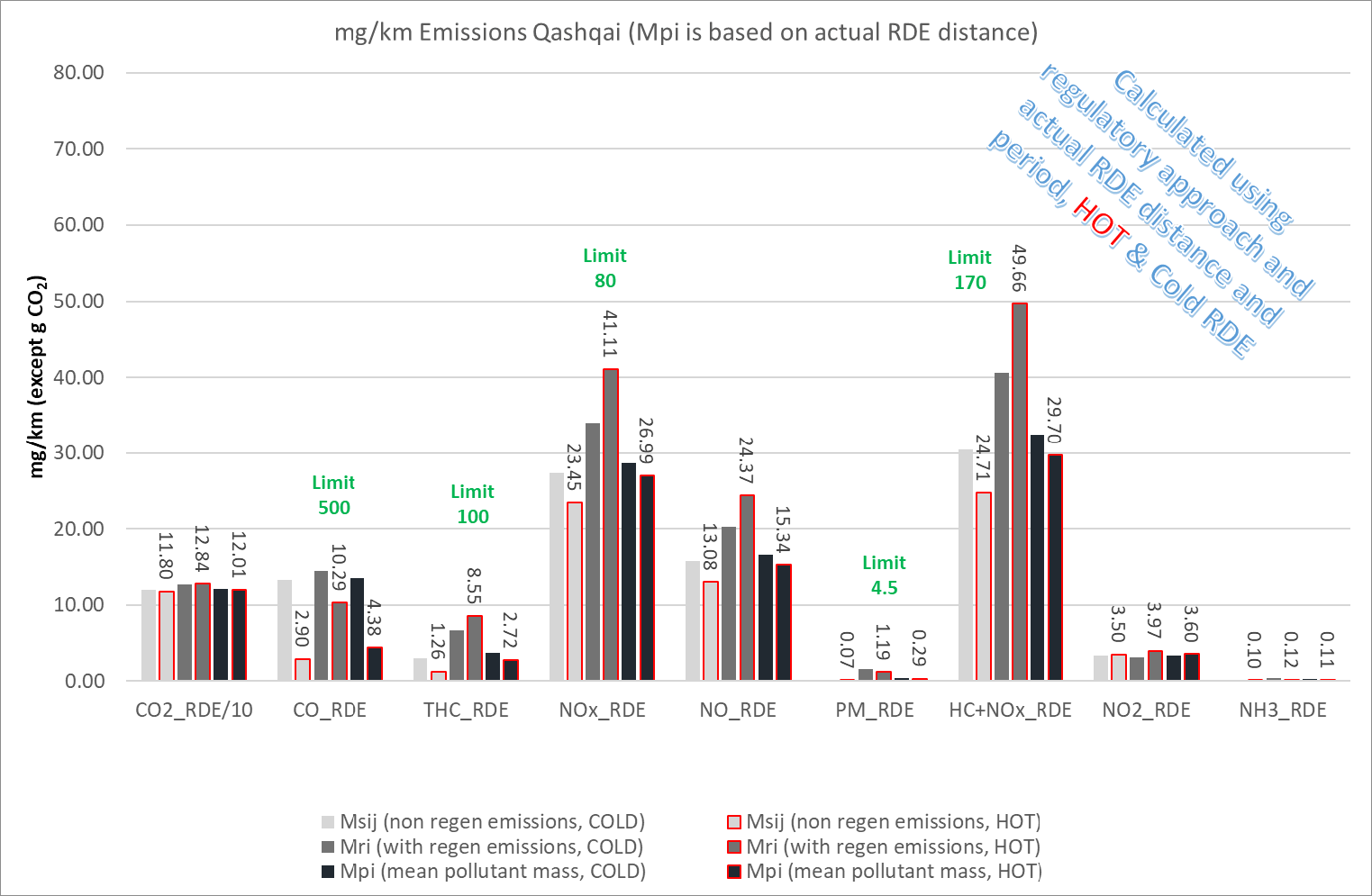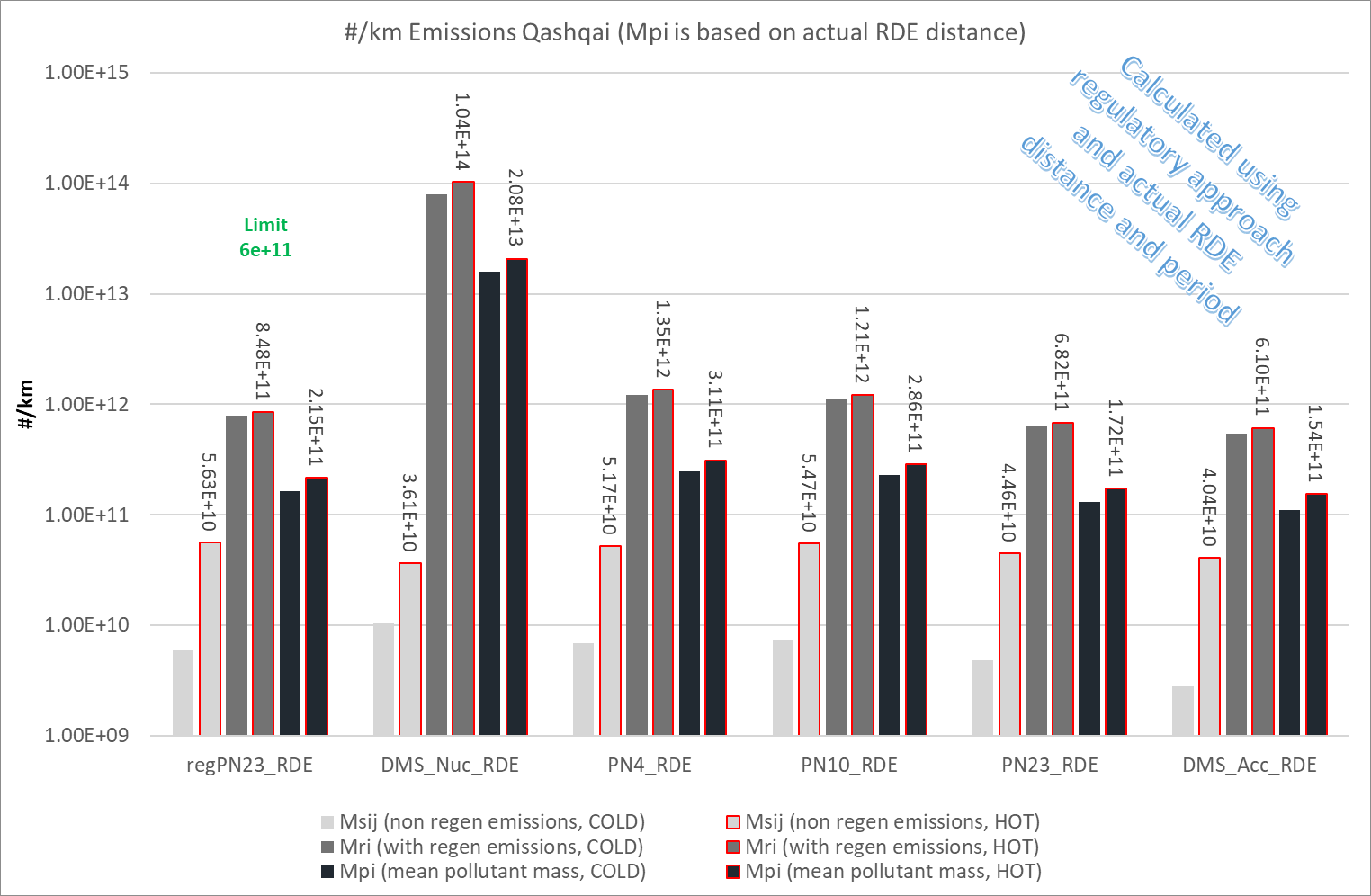Ricardo testing shows Euro 6d diesels remarkably clean
27 January 2020
Ricardo has completed a comprehensive emission testing program with two Euro6d-temp diesel cars, with a focus on emissions during the diesel particulate filter (DPF) regeneration event. The Ricardo final report shows that the vehicles were remarkably clean and all regulated emissions were comfortably below the applicable regulatory limits.
The testing was commissioned by Transport & Environment (T&E), and was the basis for T&E’s own report titled “New diesels, new problems”. In their analysis of the Ricardo results, T&E focused on a particle number (PN) emission peak during DPF regeneration and, by taking it out of the wider context, concluded that particle emissions from Euro 6d diesels present a “serious health hazard”. The T&E concerns have been addressed in an open letter by Andreas Mayer of VERT Association.
The Ricardo testing results confirm that the problem of particle emissions from diesel cars has been solved with the introduction of the DPF technology at the Euro 5b stage. The remaining problem—diesel NOx emissions—appears to have been solved by the Euro 6d-temp real driving emissions (RDE) testing requirements, which will be further tightened at the Euro 6d-final stage. The Ricardo results, as well as a number of other recent test reports, suggest that Euro 6d diesels are the first generation of vehicles that meet the regulatory emission limits not only over the laboratory test cycle, but also under real driving conditions.
Methodology. The Ricardo test program, completed in November 2019, involved two diesel cars, Opel Astra 1.6 D (81 kW/110 hp) and Nissan Qashqai 1.5 dCi (115 hp), both certified to the Euro 6d-temp emission standard. The emission system on both cars included a diesel oxidation catalyst (DOC), an SCR-coated DPF (SCRF) and a stand-alone SCR catalyst. The vehicles were tested on a chassis dynamometer over a test cycle representing an on-road RDE route. An on-road RDE data set was selected comprising speed, load and gradient from a D-Class vehicle driven over a valid RDE test around one of the Ricardo routes. The RDE data were then transposed to a data file which was readable by the chassis dynamometer’s drivers aid. Emission measurements included all regulated emissions, including non-volatile particle numbers above 23 nm (PN23), as well as certain unregulated emissions including total (volatile + non-volatile) particle numbers and size distributions, non-volatile particle numbers above 10 nm (PN10), NO2 and NH3.
The resulting on-dyno RDE cycle had a duration of nearly 6000 s and was approximately 85 km in length. Six on-dyno RDE tests (3 cold- and 3 hot-start) were completed on each vehicle. A regeneration was observed in the first cold-start RDE test conducted on each vehicle. Further tests were run on the two vehicles and in the sixth RDE (hot start), on each vehicle, another regeneration was observed. All DPF regenerations commenced in the high speed, motorway section of the RDE.
The regeneration interval was approximately 420 km on both vehicles. The duration of regeneration was about 8-9 minutes or, expressed as distance, between 11.5 and 15 km. A 15 km period has been assumed for the “active period of the regeneration” during the 85 km cycle in emission calculations.
DPF regenerations proved best observable through emissions events using CO, HC and PN, through thermal profiles using OBD channels, through thermal profiles using a surface thermocouple, and through a binary regeneration indicator in the OBD data. Regenerations were observed first in HC, since these reflect the additional emissions arising from the late post-injection of fuel that drives the exotherm for soot combustion. CO followed soon after, primarily as a product of the incomplete combustion of the extra fuel injected.
PN emissions during regenerations are caused by the disappearance of the soot cake in the filter, which lowers the filtration efficiency of the DPF. Increased PN showed up with a delay, after HC/CO, as the exhaust temperature must rise to ~550°C for soot burning to be substantial. PN emissions remained elevated after fuel and soot combustion has completed, until the DPF restored the soot cake and filtration efficiency climbed. There was no correlation of regeneration PN emissions with high exhaust flow, indicating that PN emissions were derived from combustion events and not “blow-off” from the DPF, as observed in the past with partial/open DPFs.
Emission Results. The following charts illustrate the emission results for the Nissan Qashqai. Emission results for the Astra followed the same trends and were not radically different.
Figure 1 shows the on-dyno RDE results for gaseous pollutants and for PM (mass). The six bars for each pollutant indicate, from left to right, the cold- and hot-start RDE tests without regeneration, the cold- and hot-start RDE tests with DPF regeneration, and the mean pollutant mass (Mpi) for the cold- and hot-start cycles, averaged according to the regulatory approach. For regulated pollutants, the emission limits (WLTP) are indicated in the chart.

As apparent from the chart, all regulated gaseous emissions and PM were well below the respective Euro 6 limits. Weighted cycle emissions for all gases showed limited increases relative to non-regenerating results, anticipating low Ki factors (Ki factors represent the ratio of emissions from cycles with regeneration to emissions from all cycles; they are used in the EU emission regulations to control emissions from regenerations). PM increased by a significant factor but from a very low initial level to just over 1 mg/km, still less than 20% of the limit value. Among unregulated emissions, both cars produced remarkably low levels of nitrogen dioxide.
Particle number results are shown in Figure 2. The regPN23 results represent the regulatory solid PN measurements. These are compared with a modified PN23 method and with measurements with a 10 nm and 4 nm cut-off points. The DMS measurements (for the nucleation and accumulation modes) include both solid and volatile particulates.

(In this chart, Mpi = mean pollutant number)
Regulatory PN23 emissions (for both cars) were fully compliant with the Euro 6d limit value from the weighted RDE, but exceeded the limit during regeneration. During the 15 minute regeneration period, PN emissions increased ~1000 times. For the whole RDE featuring a complete regeneration, PN emissions exceeded the 6×1011 limit value by ~40% in the Qashqai, and by ~115% in the Astra. Overall, the effect of DPF regeneration was found to increase PN emissions by 25% to 50% of the Euro 6d PN limit for each km driven, making DPF regeneration the main determinant of PN emissions. PN emissions during non-regenerating cycles were generally very low, often at the background level—non-regenerating RDE emissions ranged from ~2×109 1/km to ~1011 1/km.
Nucleation mode PN levels from the DMS increased dramatically during cycles that included regenerations. The number of particles is dependent on the dilution conditions and environment (temperature, dilution ratio, saturation ratio, humidity, residence time during dilution) and so would not be representative of real world effects on volatile PN production. However, it is clear that the regeneration releases substantial amounts of condensable species (including sulfur species and water) that are not present during non-regenerating operation.
There was no disproportionate effect of PN emissions below 23 nm. While the PN10 results are somewhat higher than PN23, these particles do not substantially increase the overall particle number.
In summary, both vehicles performed extremely well in the tests and were comfortably compliant with the Euro 6 limits—despite being at the low-cost end of the market, and Euro 6d-temp rather than 6d-final. Further improvement seems likely in the future, as there are more emission control technologies that are expected to be adopted for Euro 6d-final.
Source: Ricardo